Ducati is currently riding high. The Italian firm is reigning champion in both the MotoGP and World Superbikes series, last year sold almost 60,000 bikes to generate a turnover of more than a billion euros, and drew a record 90,000-plus enthusiasts to its annual World Ducati Week celebration in July.
The Ducati picture would be very different without the introduction, in 1994, of the 916 – the bike that transformed the marque’s status, took its race track success to new levels, and 30 years later is revered as one of the most stylish and significant motorcycles of all time.

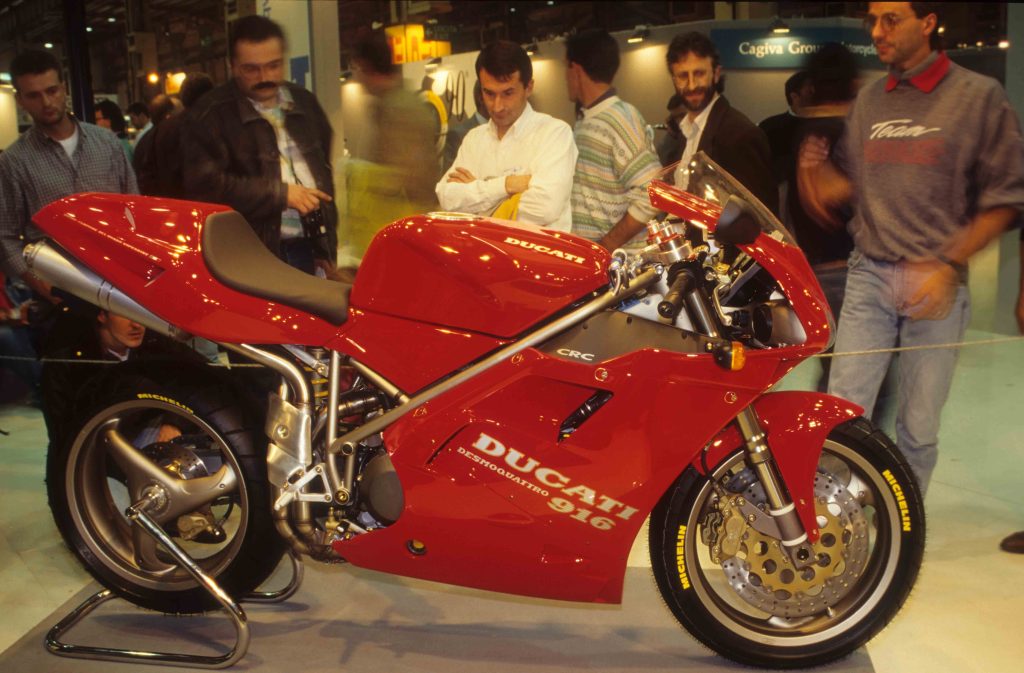
The 916’s style was obvious from the moment the sleek, slim V-twin was revealed. It was the essence of a hot red Italian sports machine, with its curvaceous bodywork, neat detailing, and features including twin headlamps, single-sided aluminium swing arm, and twin silencers in the tailpiece.
Its significance would take much longer to establish, not least because production was delayed by Ducati’s financial problems and a fire at the Bologna factory. But by the end of the decade, the 916’s sales impact and string of high-profile Superbike victories would establish it as an all-time great.
The 916 owed its existence to three men above all. Claudio Castiglioni had risen to prominence with the fast-growing Cagiva firm, before buying Ducati in 1985 and investing in models including the M900 Monster that had been launched a year earlier in 1993. The designer Castiglioni chose to create a new superbike was his old friend, Massimo Tamburini, who had co-founded Bimota and shaped the Rimini firm’s brilliant early creations. Third of the key trio was Massimo Bordi, Ducati’s chief engineer, whose liquid-cooled V-twin engine had powered the 851 sportster that had begun a new era for the firm on its launch in 1988.
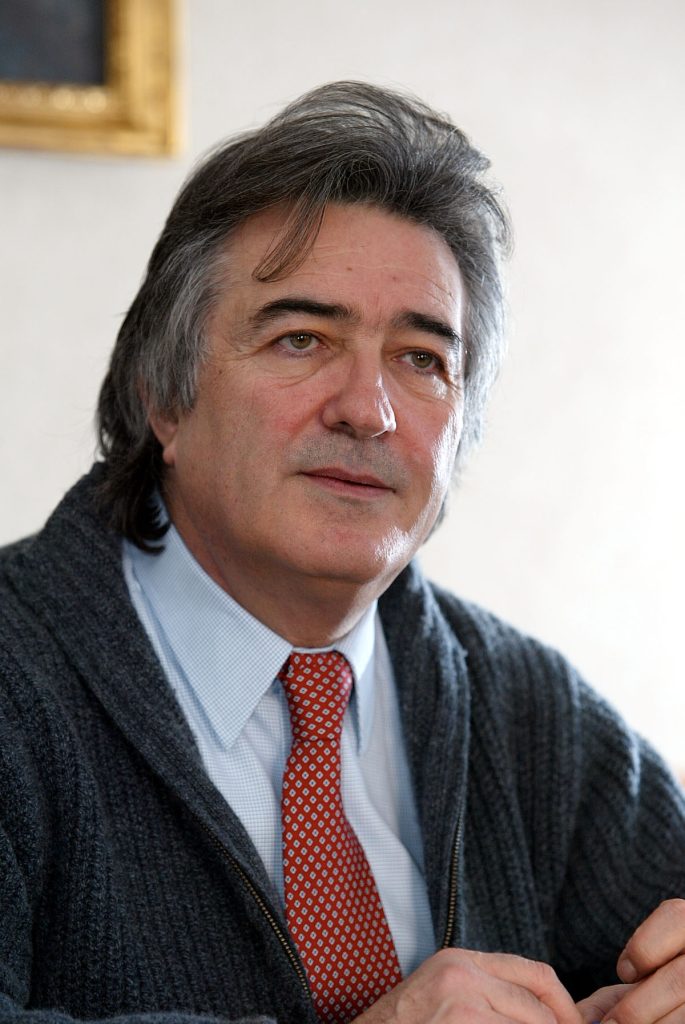
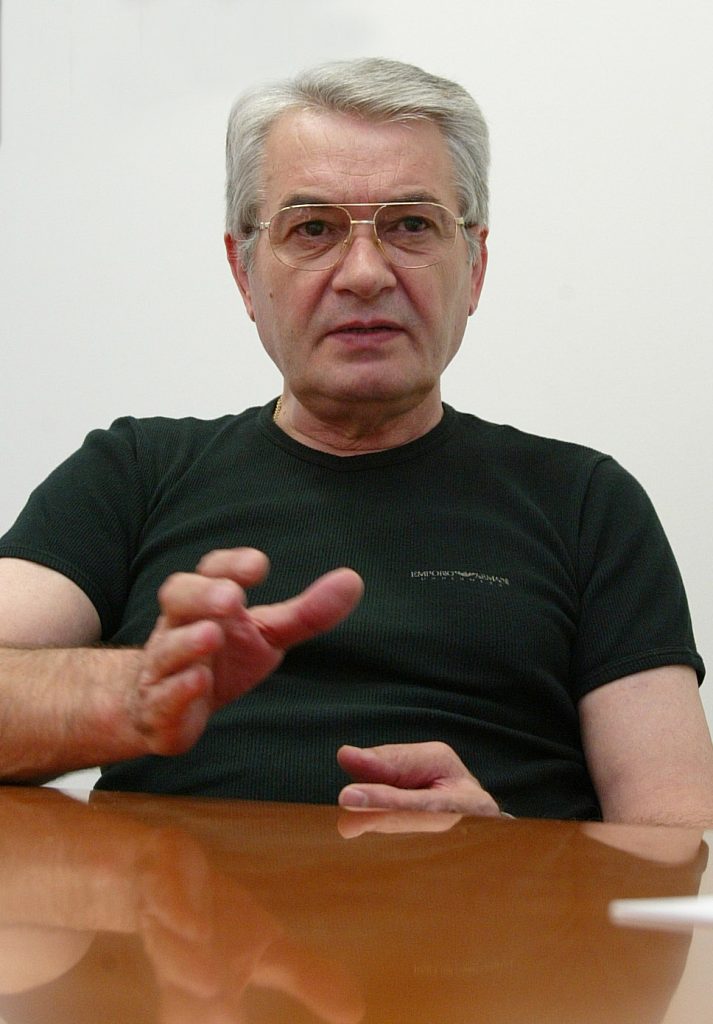
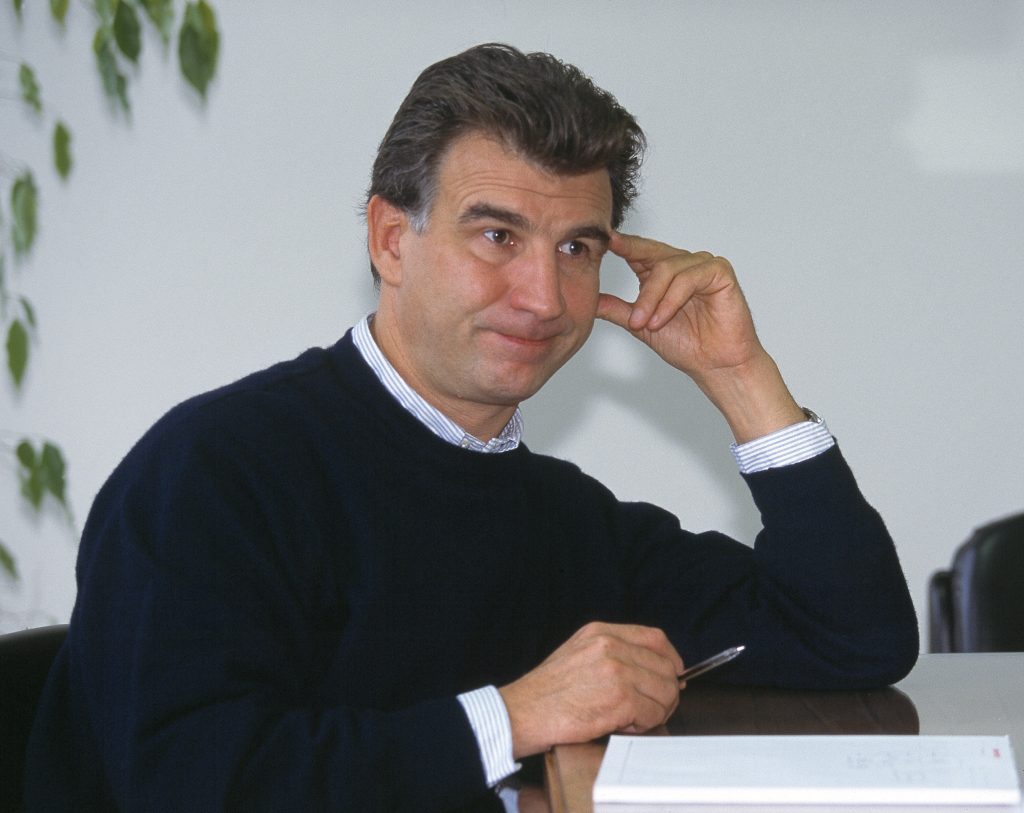
The 916’s DOHC, eight-valve desmodromic top end and 90-degree cylinder layout remained; a new crankshaft increased capacity to 916cc from the previous 888cc. Breathing was uprated with a large airbox fed by intakes running back from the fairing nose. In combination with the new exhaust system, this raised peak output by about five horsepower, to 114bhp at 9000rpm. (Ducati changed the method of measurement, making precise comparison difficult.)
Development of the new bike had begun in 1989 with a prototype whose frame was made from aluminium. “We got as far as a static model without wheels or a fairing before that idea was abandoned,” said Massimo Parenti, Tamburini’s colleague at the Cagiva Research Centre in San Marino, near Rimini, where the 916 was developed. “An aluminium chassis is not in the tradition of Ducati.”
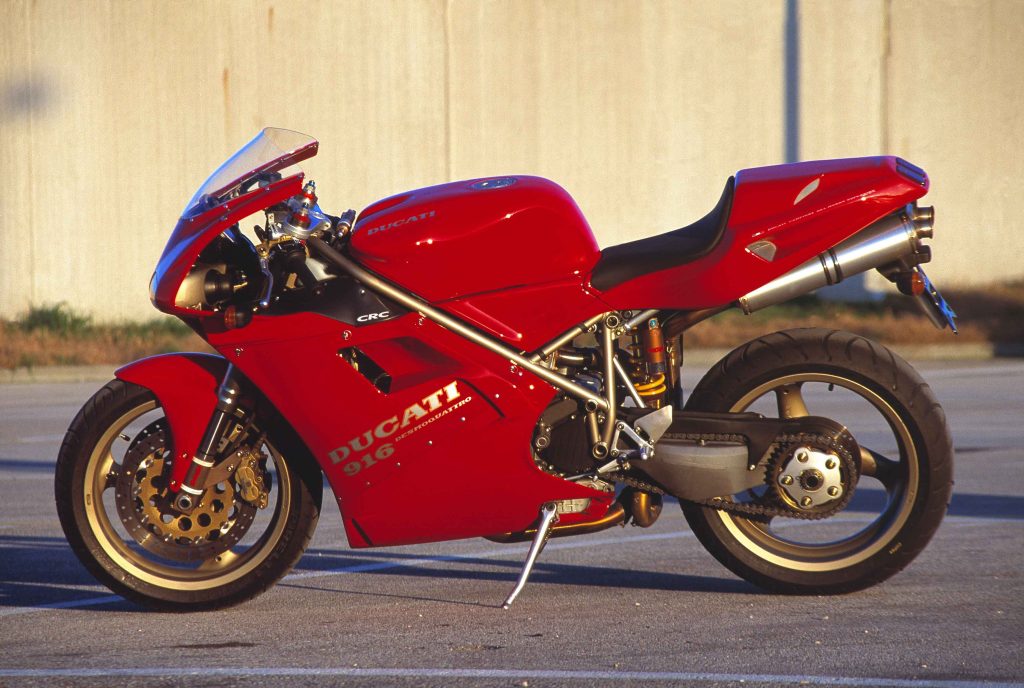
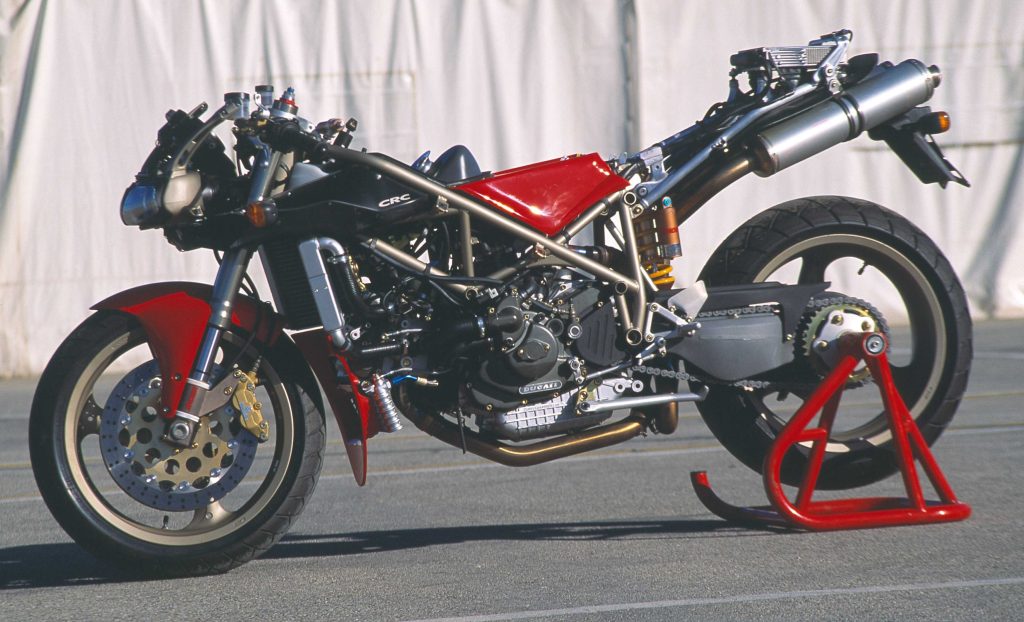

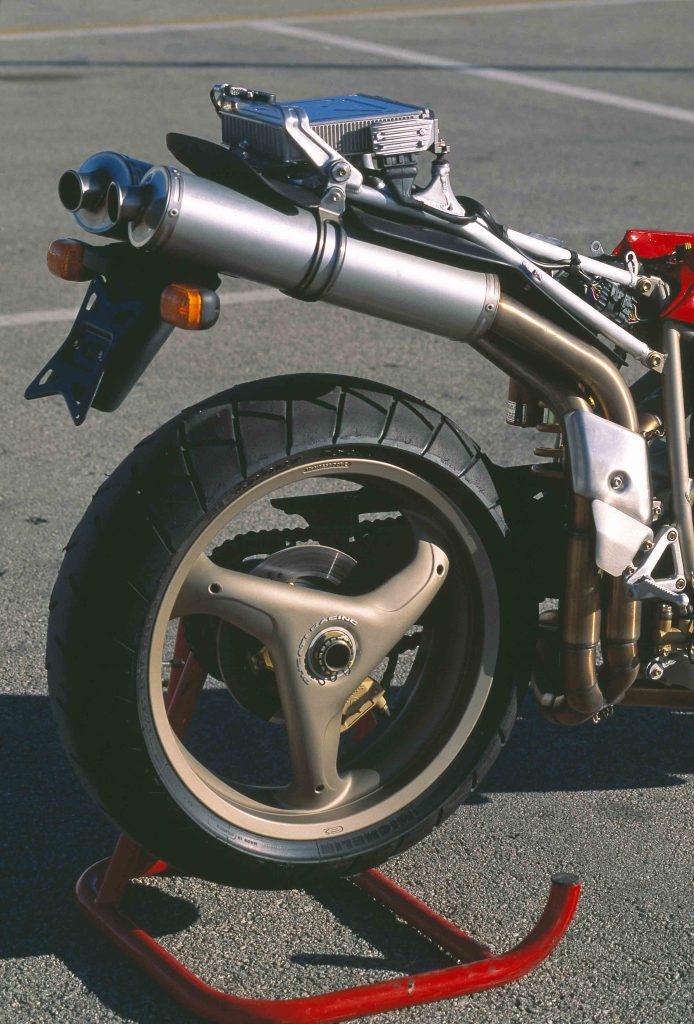
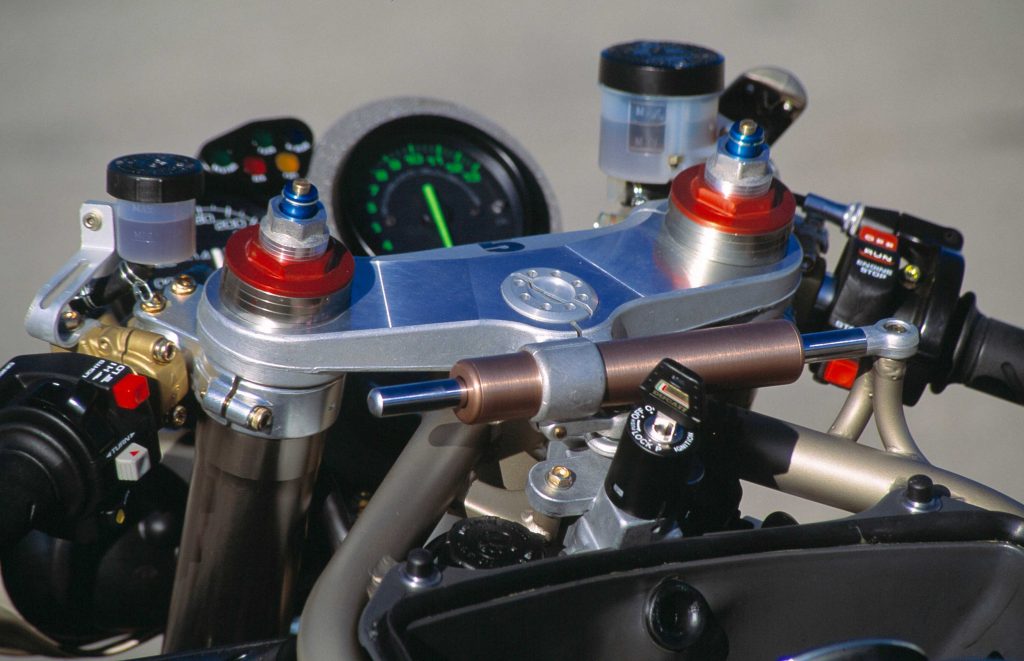
That radical change would not happen for almost another two decades, with the 1199 Panigale. But the 916 chassis did combine Ducati’s familiar steel trellis with a tubular aluminium rear subframe. “Our aim was to combine tradition with technology, by producing an advanced bike using Ducati’s tubular steel frame,” said Tamburini.
There was nothing traditional about the single-sided aluminium swing-arm, which curved around the fat, 190-section rear tyre before swooping back to anchor the three-spoke wheel. Tamburini admitted that this was not the purest engineering solution but considered the compromise worthwhile for the boost it gave the bike’s image.
Suspension at both ends came from Japanese firm Showa and was fully adjustable for preload and damping. The steering angle could be alternated between 24 and 25 degrees by turning an eccentric bearing in the headstock, to fine-tune response. A steering damper placed transversely above the top yoke aided stability.
That maximum output of 114bhp at 9000rpm seems modest these days; Ducati’s current 955cc Panigale V2 produces 155bhp. In 1994, it made the light and sweet-handling V-twin a match for any bike on the road.
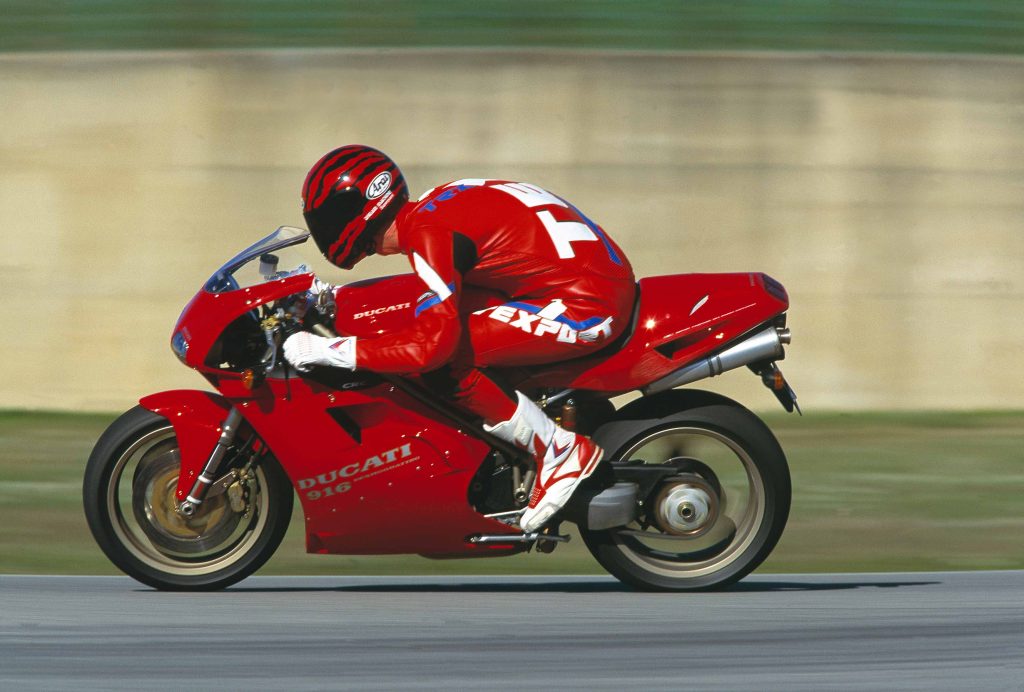
The 916 was outstanding on track, too, as was quickly confirmed at its press riding launch at Misano in January 1994. The event was relatively small, reflecting Ducati’s financial status and, to some degree, the limited expectation surrounding the 916, although its looks had caused much excitement on its unveiling at the Milan show a few months earlier.
After a memorable, high-speed day spent caning the Ducati around the Italian GP circuit, it was clear that this was a special motorbike. The 916 was not flawless, however. Its throttle response was less smooth than some, its front brake could feel spongy on track, and its spring-loaded sidestand risked an expensive spill.
But in every other respect, the 916 was every bit as sensational as it looked – fast, sweet-handling, mesmerising, and utterly thrilling. By the end of the day, our group of professional testers had been reduced to a bunch of gushing enthusiasts, to a degree rarely witnessed before or since.
Bordi’s eight-valve desmo engine had long been a torquey, charismatic powerplant, and the 916 unit was the best yet. Its midrange response was majestic, sending the Ducati rocketing out of bends from as low as 5000rpm to the accompaniment of a spine-tingling exhaust growl. High-rev acceleration was smooth and strong, too, as the bike surged toward a top speed of about 160mph.
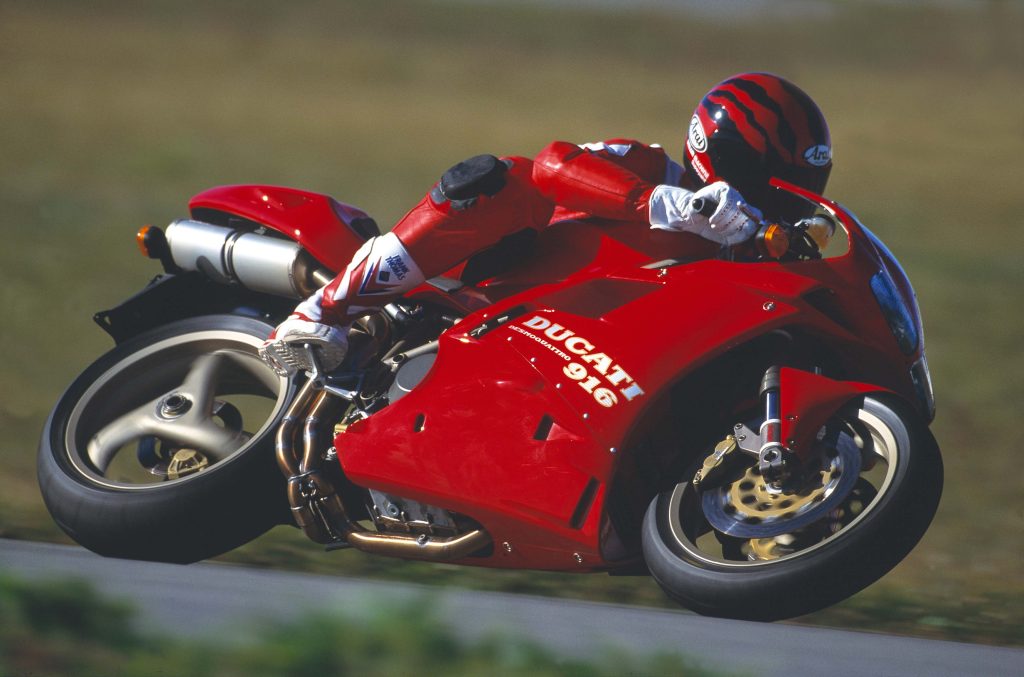
Handling was superb, justifying Ducati’s decision to stick with a steel frame, albeit one given extra rigidity by an additional rear engine mount. At 195kg (429lb) the 916 was light, and its suspension of high quality. Although not the quickest-steering of superbikes, it had a confidence-inspiring blend of stability and neutral cornering feel.
For road-going use, this most purposeful of Italian sportsters, built only with a single seat in its first year, would prove a demanding companion. In town its racy riding position, firm suspension, and eager power delivery soon became tiresome. On the right road, though, the 916 left all who rode it awed by its performance and character.
A year later, Ducati followed it with the 748, also named after its capacity, which produced 98bhp at 11,000rpm and had near identical looks and specification. It couldn’t approach the 916’s midrange punch but earned admirers with a revvier, more aggressive personality, as well as a slightly lower price.
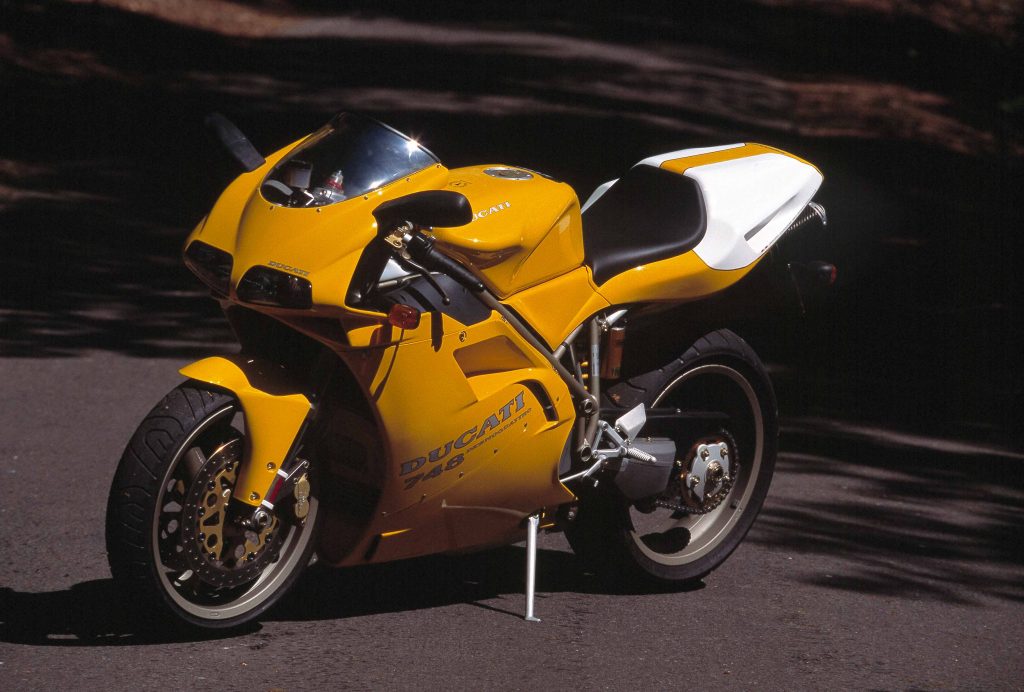
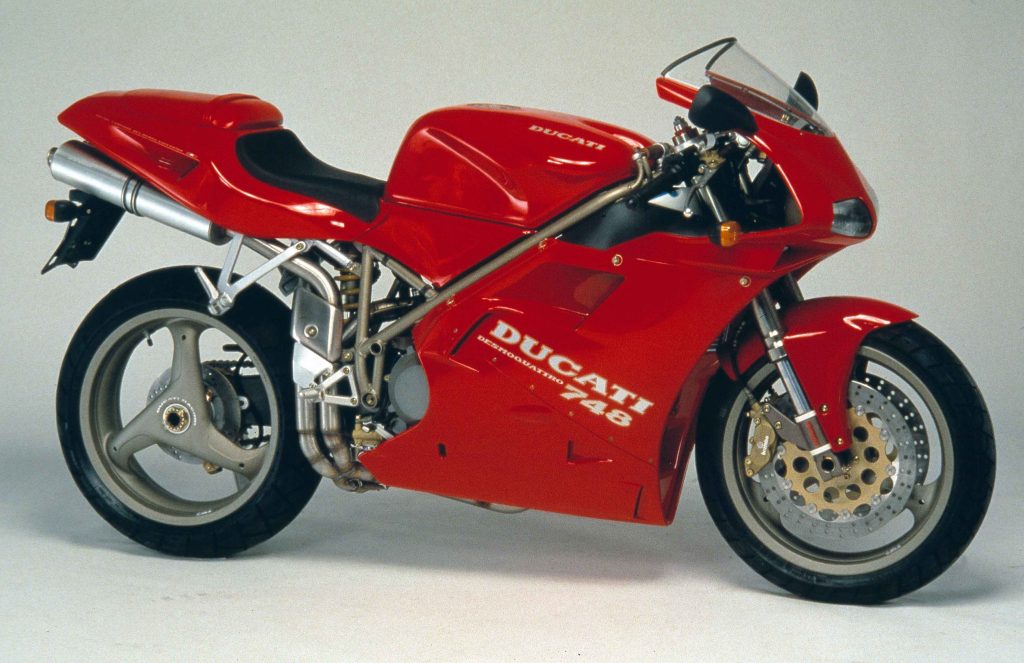
The 916 family also quickly grew with SP and SPS (Sport Production Special) models that were even faster and more magical. The 916 SPS of 1998, for example, featured increased 996cc capacity, hotter cams, increased compression ratio, and lightweight titanium conrods, and it produced an extra 18bhp.
Its frame was made from chrome-molybdenum steel tubes, rather than ordinary high-tensile steel like the 916’s, and it held parts including a carbon-fibre airbox and a steering damper and rear shock from Swedish specialist Öhlins. The SPS cost almost twice as much as the standard 916 Biposto (twin-seat model) but was nevertheless popular in many markets.
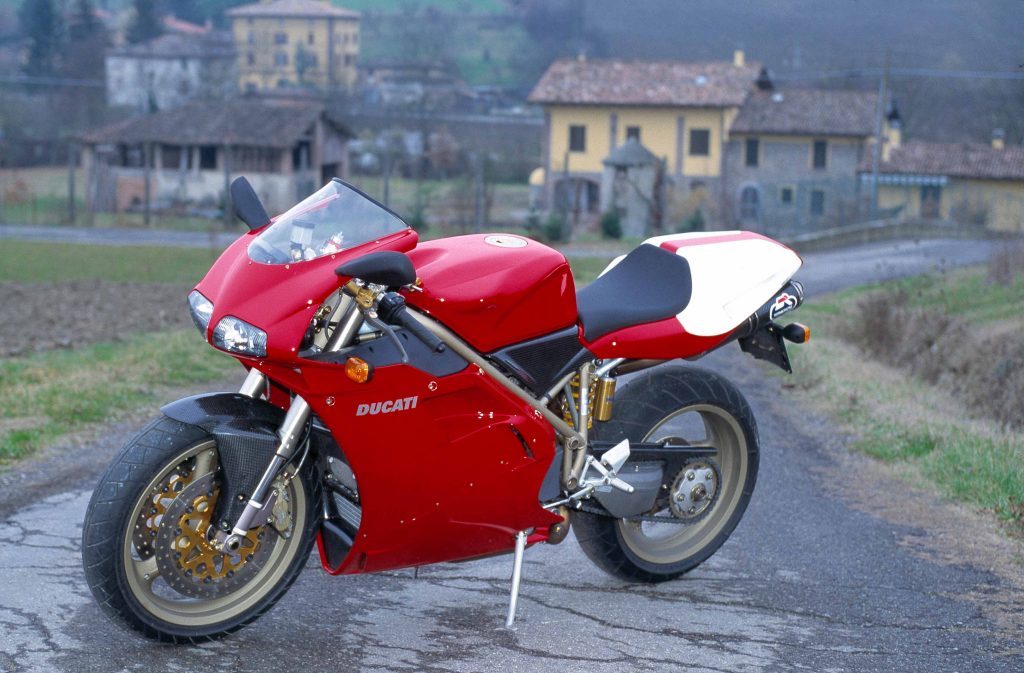
There were also three series of 916 Senna models, following an agreement with the Brazilian Formula 1 star and Ducati enthusiast just before his death in May 1994. The limited-edition bikes incorporated some 916 SP parts and silver or black paintwork; sales benefitted Senna’s charitable foundation.
The ultimate 916 variants were the factory race bikes that dominated the World Superbike championship. Britain’s Carl Fogarty won the title in 1994 and again a year later, generating unprecedented enthusiasm in his home country and beyond. Australian ace Troy Corser retained the crown for Ducati in 1996 before Fogarty, who had left for Honda, returned to win again for Ducati in 1998.
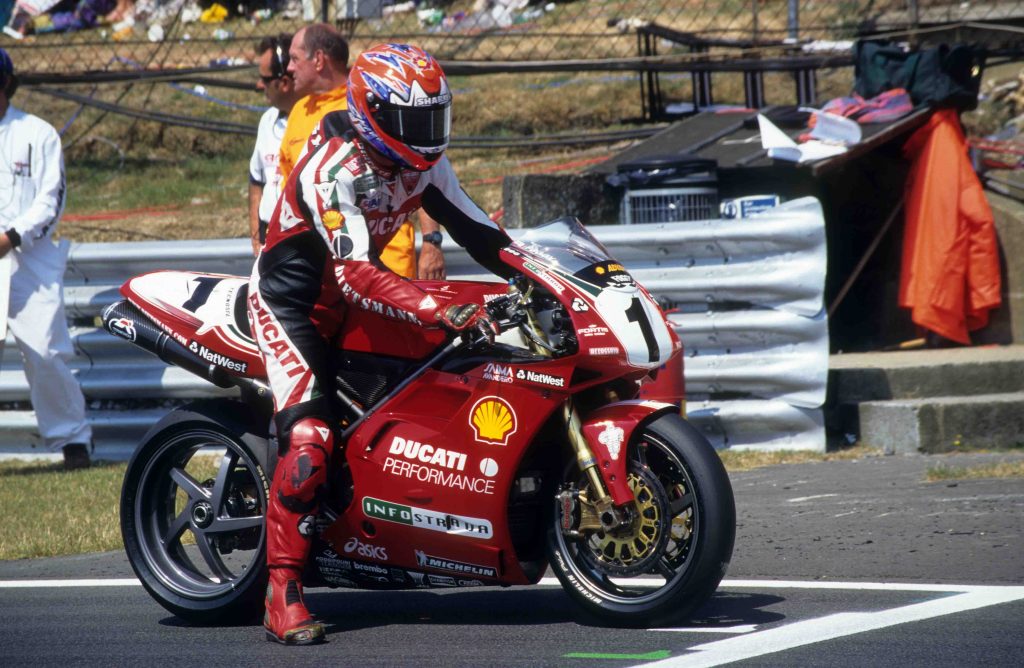
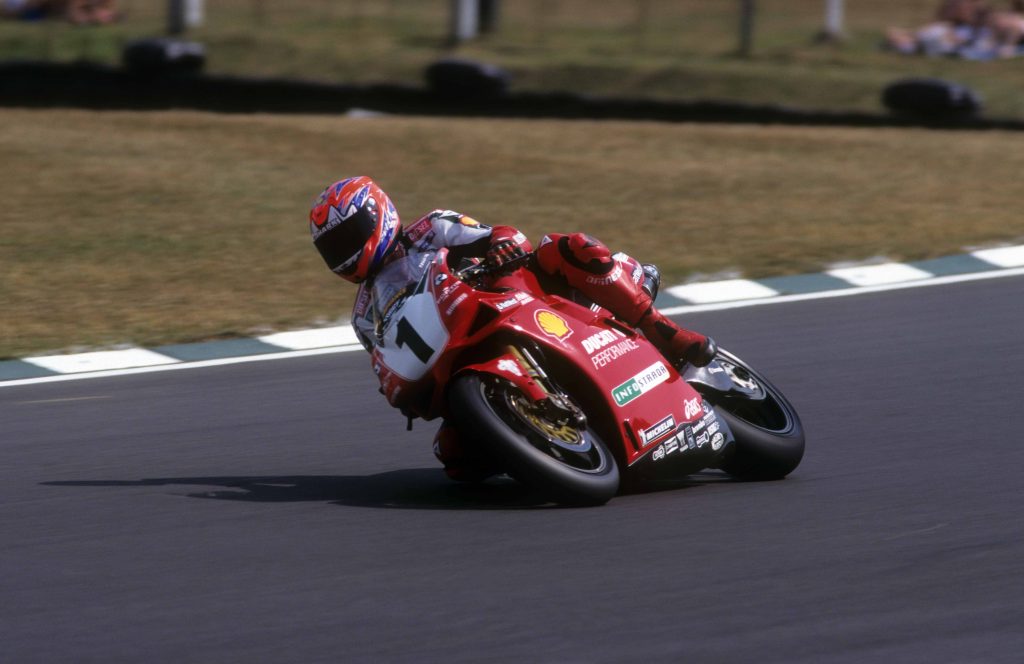
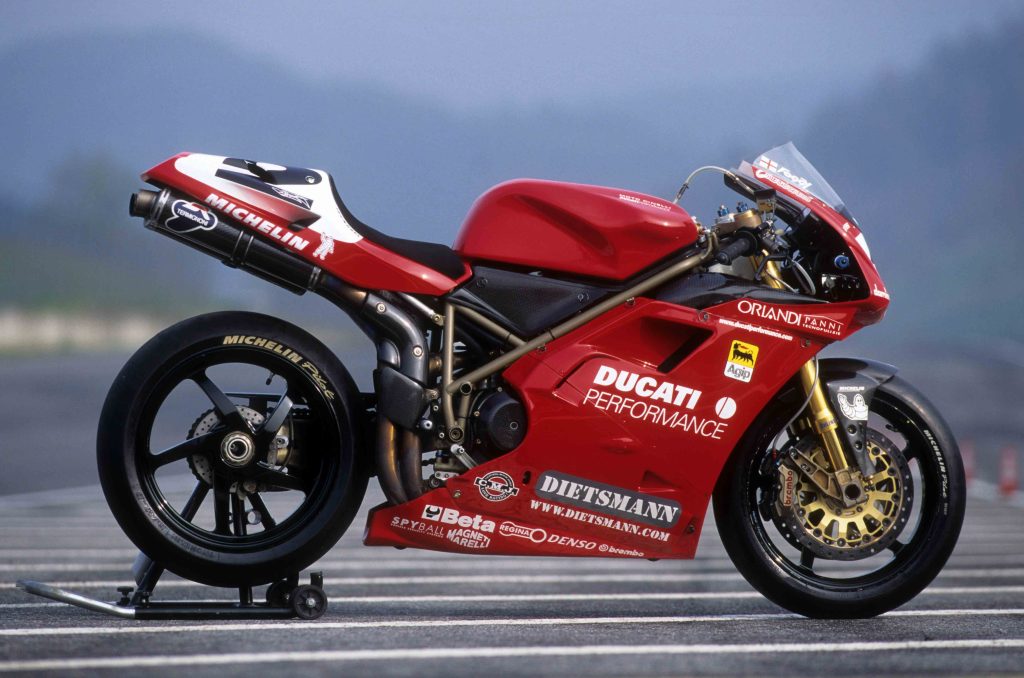
Fogarty’s fourth championship, in 1999, made it five in six years for the 916, further boosting Ducati’s transformed global image. By this time the Bologna firm had introduced the 996, still visually almost identical to the 916 apart from fresh graphics, and had produced almost 18,000 units of the V-twin.
The 996 was followed in 2002 by the 998, still with essentially the same look, and with maximum output up to 123bhp. The end finally came in 2004, with a limited run of 998S Final Edition models featuring a plaque on the top yoke, Öhlins suspension, and an Italian tricolore flag on the tailpiece. There was also a 998 Matrix, with dark green paint like that of the bike featured in the previous year’s Matrix Reloaded movie.
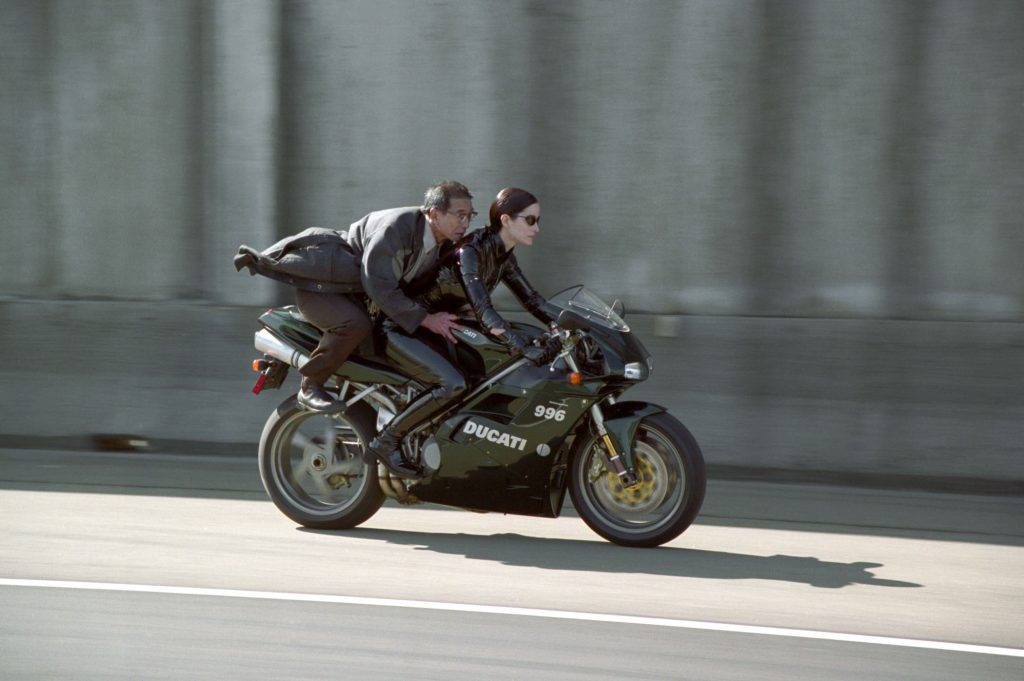
When it was finally replaced by the 999, the 916 had generated 20 distinct models plus the 748 family, and inspired a host of V-twin challengers including Aprilia’s RSV Mille, Honda’s SP-01, and Suzuki’s TL1000S – none of which had approached its impact.
And just in case anyone doubted the 916’s significance, Ducati’s troubles with its successor highlighted the challenge of creating a superbike – and the potential for trouble if one element was deemed flawed. The 999 was a completely new bike and superior in most respects: more powerful, comfortable and sophisticated. But the 999’s styling lacked the 916’s flowing elegance. Ducati superbike sales dropped disastrously, recovering only in 2009, after another full redesign had created the 1098, which much more closely resembled the 916.
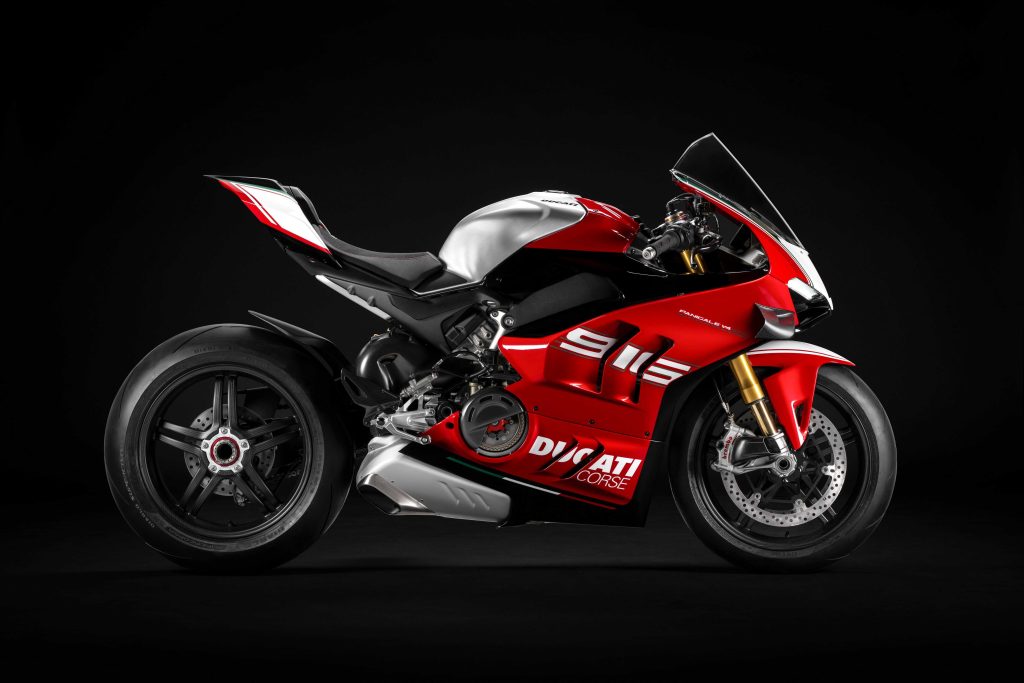
Ducati would not make the same mistake again – which is why even the Panigale models still have clear visual links to the 916. That includes the latest Panigale V4 SP2 30th Anniversario 916 – a limited-edition tribute to the bike on which so much of the firm’s current success was built.
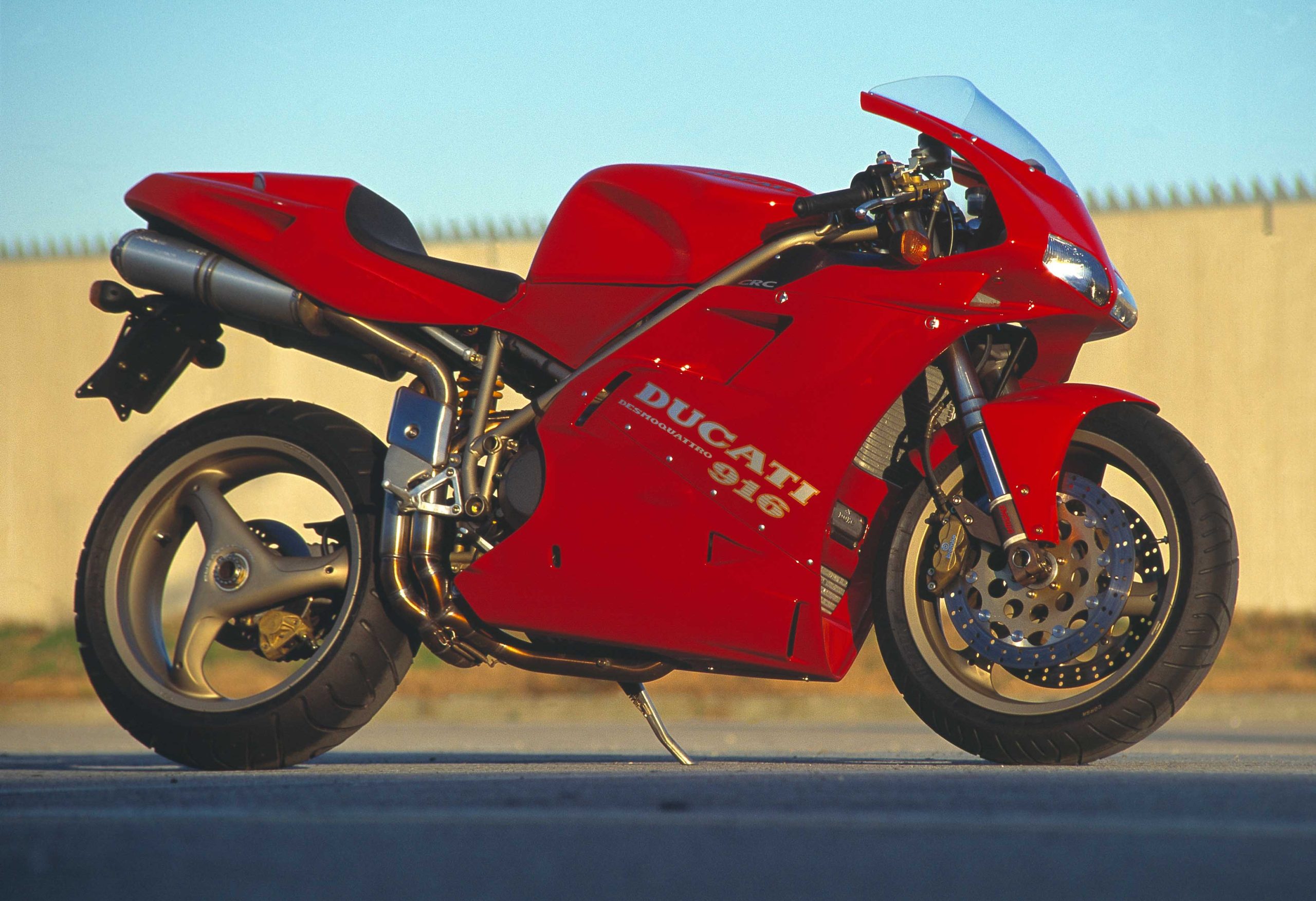

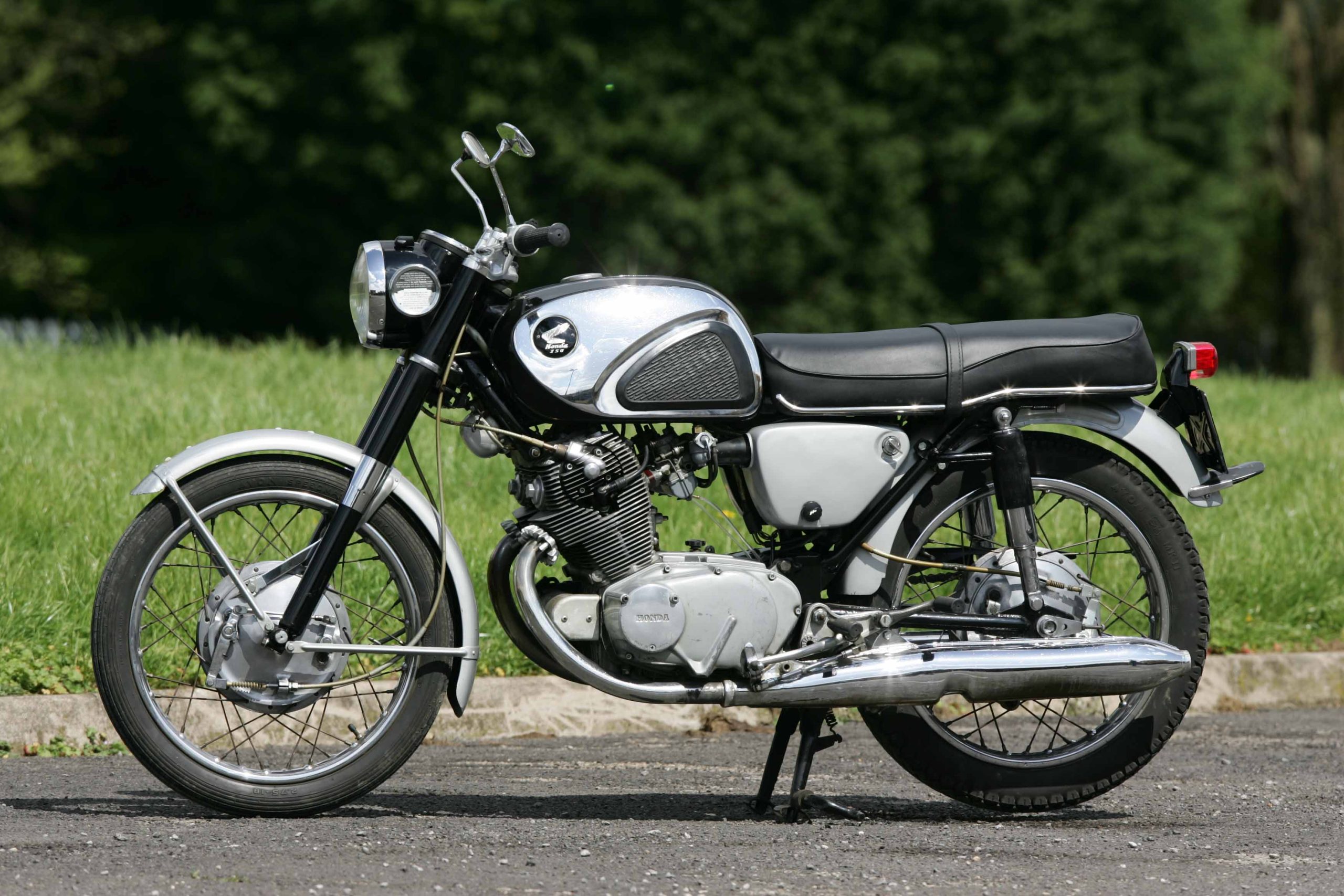
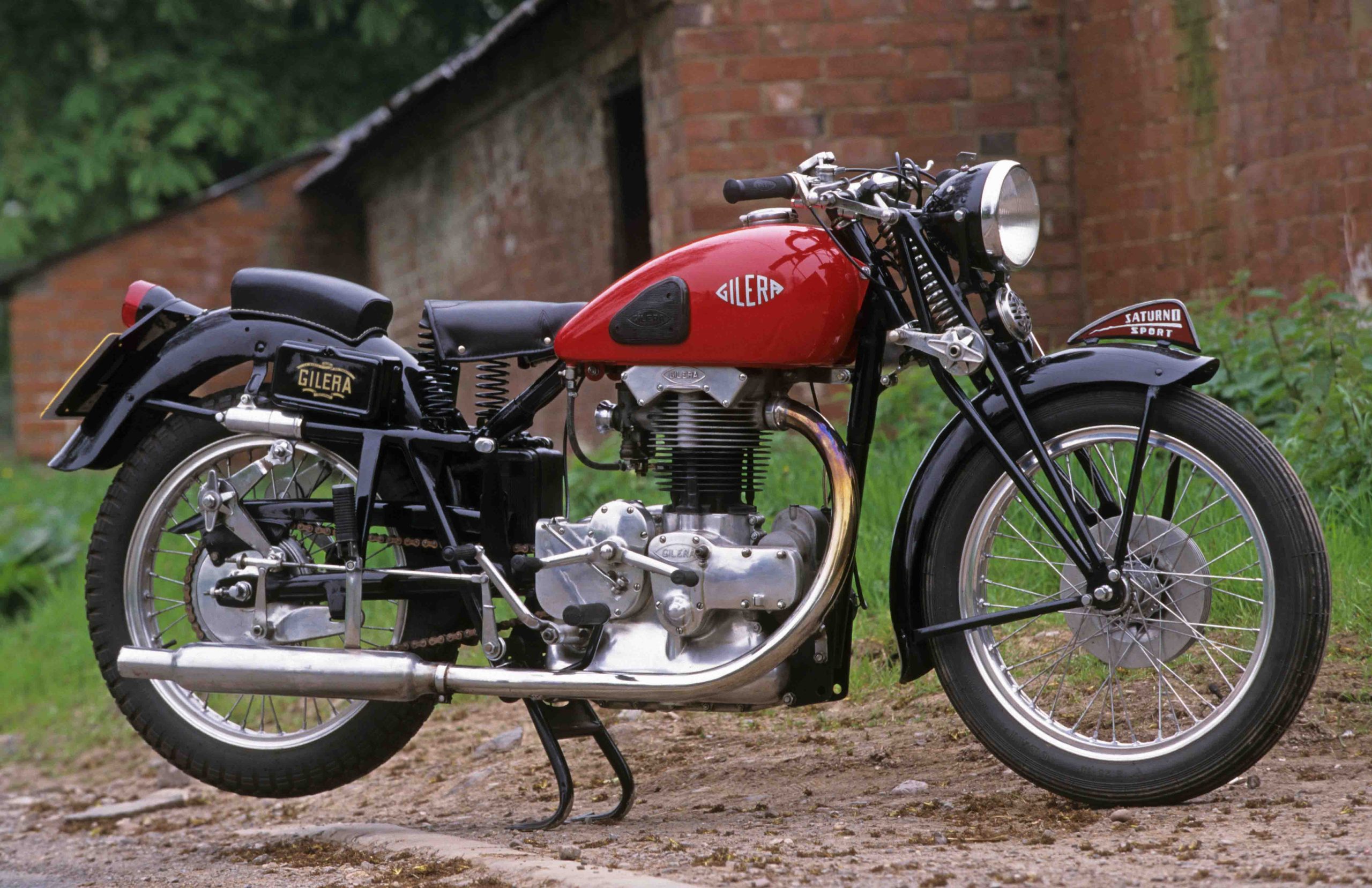





I started off life as a motorcycle mechanic at 15 then full time when i left school. I have owned a lot of motorcycles more than i can remember but I still have the 916 I bought in 2006. Its a 1998 biposto which I have done over 40,000 miles on. Included in this has been some trips abroad to Italy and the UK. My first days, i smiled and thought it was a great handling bike in its time. It can still hold its head up high in looks and performance although it depends on the road.
Some interesting facts, when on the trip to Italy. Using the motorways with speeds of 80mph, it was returning 76mpg. I used to get 45mpg with a mixture of town and motorway to work.
All the body work is really easy to take off with a couple of allen bolts and even the seat is only push fit plastic fittings. 10 zeuss clips on the fairings each side. The mirrors have brass heads which break saving the mirrors for taking impact. The battery is easily accessable from the fairing right side for a jump start. I changed mine from lead acid to the new type and saved a few kilos. I also put a different mosfact regulator rectifier which cured any electrical charge issues.
Its brought me many a smile. I have just had it resprayed for sale. Although i said this last year and turned down an offer. Maybe this might happen.
I kept a blog with lots of the issues that happened along the way. have a look at
I have more on my blog https://ducati916bp.wordpress.com/ Vincenzo vinnychoff